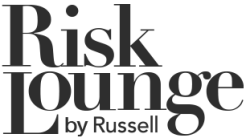
Russell Group, which will be attending the C5 Financial Institutions Conference on the 8th October, has written the following FI Market Update to co-inside with the event.
As the C5 organisers note on their website, financial institutions like the Financial Conduct Authority and Prudential Regulation Authority have replaced the FSA, and there is new regulatory legislation for hedge funds and private equity funds in the form of the Alternative Investment Fund Managers Directive (AIFMD).
Regulatory Requirements
The AIFMD was transposed into UK law on the 22 July 2013. It is a European Directive which seeks to regulate the non-UCITS fund sector. The managers of any regulated or unregulated collective investment undertakings not requiring authorisation under the UCITS regime will fall within the scope of the AIFMD. Thus managers of hedge funds, private equity funds and real estate funds will usually be affected. Firms authorised as depositaries will also be within scope.
According to accountancy firm Moore Stephens, the aim of the regulator is to prompt firms that will or may fall in scope of the directive to start making choices about their structuring for compliance. Firms that are already managing an AIF may be able to benefit from a transitional period of 12 months to be compliant by 22 July 2014.
Litigation on the up
Outside of the increasingly onerous regulatory regimes, the risk exposures faced by Asset Management companies and the (re)insurance sector that underwrites some of these firms are increasing.
In addition to the £3.5 billion class action claim launched against RBS, a group of 13 UK banks and credit card firms recently agreed to pay up to £1.3bn in compensation to consumers who were miss-sold insurance against identity theft and the loss of credit cards, the UK financial regulator said.
The on-going threat of litigation and claims merely serves to highlight the risk exposures facing FI’s and the vital role that FI insurance plays in managing risk.
Against this backdrop, however, there are signs that the global asset management and investment community senses a return to growth. Taking the global insurance industry as an example, a Goldman Sachs survey earlier in 2013 - GSAM Insurance Asset Management – Growing But tempered Optimism – returned the following information:
- 31% of insurers globally believe investment opportunities are improving, compared to 14% in 2012.
- Insurers believe equities will outperform fixed income assets in the next 12 months. CIOs anticipate emerging market equities (21%), US equities (21%), private equity (13%) and real estate (9%) will be the highest returning asset classes in 2013.
- Insurers intend to increase portfolio allocations to bank loans (43%), US equities (38%) and real estate (37%). Insurers intend to decrease allocations to government and agency debt (42%) and cash and short-term instruments (37%), consistent with their low return expectations.
Refinancing
That said, financial risk exposures in the FI space appear to be on an upward curve.
In addition to miss‐selling claims, underwriters are also witnessing more insolvency claims and transactional disputes. According to AIG there has been a 50% increase in insolvency claims which is currently impacting on the insurance market. In a 2012 report, AIG commented that many corporates will be refinancing, estimating that highly leveraged companies will need to refinance £1 trillion over the next 18 to 24 months.
Balance Sheet Risks
Balance Sheet risks are another cause for concern. In one single day on the London stock market, for example, more than 700,000 trades may occur at a value of over £4 billion, according to Mark Moorman, Director of Financial Services Practice, SAS. In this environment understanding the Value at Risk (Vary) becomes a complex, timely problem.
The latest balance sheet damaging episode saw JP Morgan Chase & Co settling U.S. and U.K. probes of a $6.2 billion trading loss, agreeing to pay $920 million in penalties and admitted violating securities laws last year as top managers withheld information from the board, according to the Bloomberg News Agency.
According to the Bloomberg article (20th September 2013): “Senior executives had evidence by late April 2012 that traders in the chief investment office in London were pricing a derivatives portfolio in a way that reduced reported losses, the Securities and Exchange Commission said yesterday in a cease-and-desist order. The losses at the unit, which was supposed to help reduce risk and manage excess deposits, forced the bank to restate results for last year’s first quarter.”
Executive Misconduct
Apparently, executives at the biggest U.S. bank engaged in what watchdogs called a “pattern of misconduct” by maintaining poor internal controls, failing to keep their board informed and allegedly misleading regulators.
Following the news, JP Morgan shares fell 1.2 percent in New York and it was reported that the company’s shares have climbed 20 percent this year, trailing the 25 percent advance for the 81-company Standard & Poor’s Financials Index.
Exposure Management
In such a complex and risky environment, Financial Institutions have very specific exposures and reinsurers, for example, will need to import entire client portfolios for exposure management on all risks or target sub-set for reporting purposes. To facilitate the handling of these large data volumes, Russell is finding that increasing numbers of clients and insurance market operators are seeking advice on how to perform name matching, data validation and accumulation control.
Integrated Management Approach Risk
Capital Providers and (re)insurance companiesneed to demonstrate that they are fully aware of exposure commitments and of the potential balance sheet destroying consequences of risk decisions. Russell Group is a leading risk management software and service company that provides a truly integrated approach to aggregate management, pricing and portfolio modelling by supporting insurance, reinsurance and retrocession needs across the specialty classes, including Financial Institutions.
If you have a question about risk exposures in the Financial Institutions sector, please contact us.





